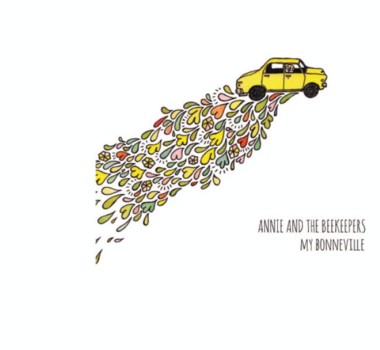Annie and the Beekeepers
My Bonneville
(independent)
Inspired from an early age by classic female folk singers and her love of string music, singer/songwriter Annie Lynch joins with musicians The Beekeepers to form a multi-talented band whose music is atmospheric and consuming from the first listen. New music created by the stuff of old souls, My Bonneville features a variety of instruments and musical styles. Mandolin, trumpet, double bass and trombone, paired with Annie’s sweetly melodic tones, deliver a jazzy, Americana, rootsy and folky listen. Her understated vocals delicately accompanied by precise instrumentals on My Bonneville create a scintillating feel that plays heavily on the heartstrings. —Olivia Wrobel
*
Dérive
All My Demons Are Coming Loose
(independent)
Written over the course of seven months in 2012, this debut full-length from a group of Northampton-based experimental rockers is an ambitious two-act musical/concept record featuring “a ton of guest musicians, a lot of Lord of the Rings references,” and even quotations from religious texts. A script on the band’s website illuminates the overall story, but opening track “Last Night at the Social” wastes little time in immersing listeners in alternating sections consisting of hardcore raves and piano-led interludes. Assorted instruments like accordion, glockenspiel, recorder, trombone and more crop up throughout the album, yet it’s the sparser moments that often draw the most interest. For example, the soft, finger-picked intro to “How We Blew It” provides a welcome counterpoint to the song’s spoken-word-like delivery. Still, it’s the overwhelming sense of theatricality that will bring audiences back to repeatedly explore the record’s layers. —Michael Cimaomo
*
LVMRKS
Pale Fairytale
(LVMRKS)
LVMRKS (pronunciation unclear) is the new project from Neil Busch, former vocalist/bassist/songwriter of …And You Will Know Us By The Trail Of Dead. The music’s strengths are, by some measures, also its biggest weaknesses. The prominent, multi-layered guitar work is straightforward, consisting of big clumps of fuzz- and echo-drenched notes and tweedly rock noodling. That is in itself a particularly telling choice in an era when most indie bands are adding everything from glockenspiel to bass sax to the proceedings. The vocals are lightweight, with nearly every phrase ending in a warbling vibrato. The combo sometimes works to bring to life a melodic rock sensibility that goes down easy. Most of the time, however, the thick layers of guitar are closer to turgid, and the slow-moving chords and gummy melodies seldom surprise or compel. —James Heflin



